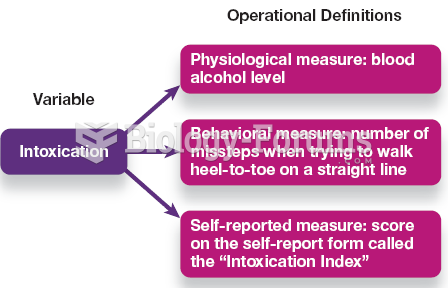|
|
|
The familiar sounds of your heart are made by the heart's valves as they open and close.
Common abbreviations that cause medication errors include U (unit), mg (milligram), QD (every day), SC (subcutaneous), TIW (three times per week), D/C (discharge or discontinue), HS (at bedtime or "hours of sleep"), cc (cubic centimeters), and AU (each ear).
More than 30% of American adults, and about 12% of children utilize health care approaches that were developed outside of conventional medicine.
Walt Disney helped combat malaria by making an animated film in 1943 called The Winged Scourge. This short film starred the seven dwarfs and taught children that mosquitos transmit malaria, which is a very bad disease. It advocated the killing of mosquitos to stop the disease.
People about to have surgery must tell their health care providers about all supplements they take.







